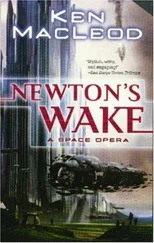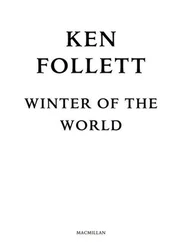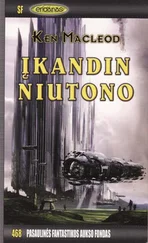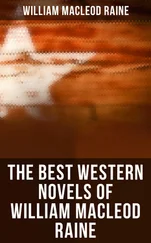At the cabinets of literature and painting — the distinction was contested, even by experts — Darvin stopped. Parchment scrolls many wingspans long were the main display; every day or two, a museum attendant would wind every scroll forward, to avoid excessive exposure to the daylight. Intricate and colourful, crowded with figurative scenes that sharpened into structures of glyphs before the eye, and with lines of lettering that rioted into characters and animalcules in lush symbolic landscapes even as one tried to descry their rhythm, they glittered with a sensibility at once grave and gay, an outlook solemn and frivolous, a theology horrific and humorous, a philosophy perceptive and pedantic. Darvin hurried past them, seeking another exhibit which he recalled having noticed on his introductory tour.
There it was, a broad dark backdrop to a tall glass-fronted case of astrolabes and orreries. Of a fine, hard-wearing and unfading opaque black cloth, three wingspans across by three high, it was worked with a multitude of minute, separate stitches of coloured wire — silver mostly, some copper, a few gold, and a whole palette of precisely coloured alloys and anodised metals. It could have been a banner, or a wall hanging, or a wrap. It was something altogether different, and more astonishing than even its breathtaking beauty might suggest. It was a map of the night sky, from the northern and the southern hemispheres both, a seamless rendition of an unseeable scene. Its construction must have taken spans of moons; its preparation, eights of eights of years. From a distance — from the opposite side of the gallery, across the well of the museum tower — it would have looked like a breath of fog, a silver shimmer; in the wrong light, a dull pewter grey.
Darvin peered at the label, a yellowed scrap of curling paper in the corner of the case, the Selohic words lettered in a shaky Gevorkian script, ink faded to brown. The map, looted in some raid on a temple on the northern coast of the Southern Rule back in the Long Night, was as nearly as could be determined one thousand and seven hundred and fifty years old. He nodded to himself and examined the celestial embroidery. The blue-green stars of the Daughters were quite distinct, as were their copper, gold, or silver neighbours. He searched for any wayward stitch that might represent a comet, and found none. As he assimilated this small disappointment, a quite different anomaly struck him. He knew that patch of sky well by now, and it looked wrong. He took a sheet of paper and a pen from his belt pouch and copied with great care the area of the Daughters, noting the colour of each prominent star. There were only twenty-seven green stars; he knew there were many more.
He gazed at the display for a long time, then folded away the paper, sheathed the pen, and vaulted off the gallery railing. His long swoop across the ground floor and out of the door was accompanied by indignant yells from the attendants, but he didn’t care. He flew back to the Department of Astronomy and stalked to his office. His hands were trembling as he riffled through the photographic plates, shaking as he compared one with his sketch. The plate was, of course, black and white, so he had to look the stars up in the ephemeris. He circled them, one by one, on the sheet of thin translucent paper that protected the photograph, and forced himself to count with great care. Of the most visible stars in the Daughters, fifty-eight were classified as green. On his sketch, the other thirty-one were marked as red, or yellow, or white. He telephoned Orro.
“This must have been noticed before,” said the Gevorkian.
“It has,” said Darvin, hunched over an old encyclopaedia of astronomy he’d tugged from a high shelf. “ ‘Southern Rule, astronomy of,’ ” he read out. “ ‘Impressive in the detail of its observations, especially of comets (q.v.) and the sophistication of its instruments (q.v.) but vitiated by its traditional association with astrology (q.v.) and the religious and symbolic basis of its systems of celestial classification, a characteristic instance of which can be seen in the Temple Sky Map (q.v.) with its misleading rendition of the Daughters.’ ”
Darvin flipped over pages, dislodging dust. “ ‘Temple Sky Map: Booty of glorious battle of’ blah blah… ‘astounding workmanship’ blah blah… ‘despite this the colours used for stars in some instances, e.g. the Daughters (q.v.) apparently chosen for aesthetic or symbolic reasons, related to astrology (q.v.)’ blah blah… ‘superstition’ blah blah… ‘sad instance of scholastic dogmatism reminiscent of Seloh’s own Long Night’ blah blah… ‘benighted priesthood’ blah blah… ‘nevertheless of great historical interest and remarkable beauty, currently on display in Five Ravines,’ etc.” He looked up. “Tickets, sweets and souvenirs at the door.”
Orro laughed. “ ‘A sad instance of scholastic dogmatism,’ indeed,” he said. “Even in the Long Night, it was believed that the Queen passes Her green gift to other gods, who become the Daughters.”
“That,” said Darvin, clapping the book shut, “is precisely why any idea that the stars could change colour in historical time is no longer believed. It’s regarded as a quaint superstition.”
“There are variable stars,” said Orro.
“Yes, but they’re cyclic. Well understood. Their fires flare and fade periodically.”
“Fires?” Orro looked sceptical, and rather as if he’d caught Darvin out.
“All right,” said Darvin. “The physics of stars is not well understood.”
“Nor is the physics of radioactivity,” said Orro, with apparent irrelevance. He fixed Darvin in a quizzical gaze for a moment, then sighed. “Oh well. I suppose we should next investigate some early modem observations — Dawn Age and onward.”
“I’ve done it,” said Darvin, tapping a finger-claw on a stack of open books on his desk. He stood up. “Predictably enough, it turns out that some of the Daughters were misidentified as other types of stars, back then. Inadequate telescopes, unskillful observations — you know how it is.”
He dragged one of the books across the desk, pointed at a reproduction of a crude woodcut illustration in which the stars were shown encircled by tiny flames, and marked by tinier letters. The key, written in Orkan but in Selohic script, classified forty-nine of the stars as green, and identified the nine others now included among the Daughters as yellow or red.
Orro laid the tracing of the recent photograph and Darvin’s sketch of the ancient map on opposite sides of the book. “It seems,” he said, “that we have identified a trend.”
“Is it possible,” Darvin asked, “that the modern classification is wrong?” He laughed. “I myself have never counted the Daughters. Actually, since I became an astronomer, I’ve hardly looked at the sky.”
“Let’s do that,” said Orro. “Let’s go out onto the high plain and count them for ourselves.”
“The high plain…” Darvin said. “Yes, let us do that tomorrow, and one thing else that we can only do in the day.”
“What’s that?”
Darvin grinned. “You’ll see.”
The main cable-car station was quiet the following morning, after the earlier incoming rush of travellers from the plains settlements had subsided. Darvin and Orro, carrying small packs of dried meat and dried fruit and with knives and electric torches clipped to their belts, climbed into a car and sat side by side. A trudge bolted the door and pushed the car around the curve of the terminus loop to face the exit, then tugged a lever to clamp the overhead to the active cable. The car lurched forward into the sunlight outside, rushed up above a steep slope to a stubby pylon at the top, jolted over it then settled into a more gradual ascent to the clifftop pylon that overlooked the town. Darvin poked his head through the open side window and gazed down at the crowded roosts and deep ravines, pondering how different they looked when one was borne aloft from how they looked when flying. The sensation was strange and dreamlike. After a few moments it made him feel queasy. He turned and faced ahead. The journey to the ochre cliffs of the high plains tableland took about an hour. Halfway up the long catenary that connected the final pylon on the grassland with that of the substation at the top of the cliff, Orro gave a grunt.
Читать дальше












